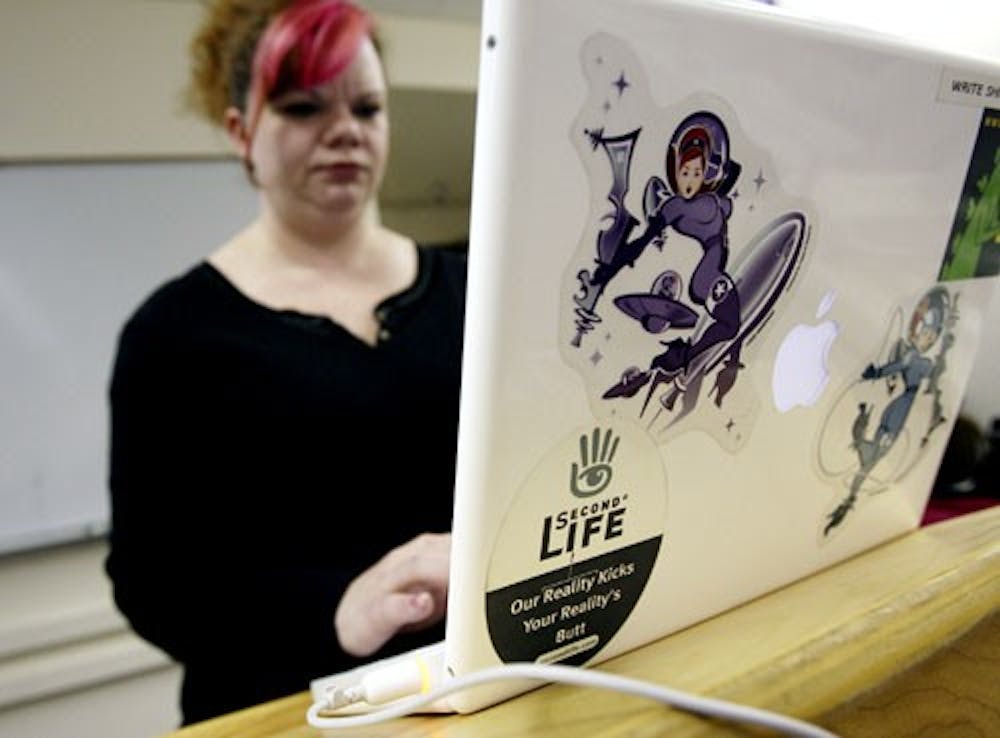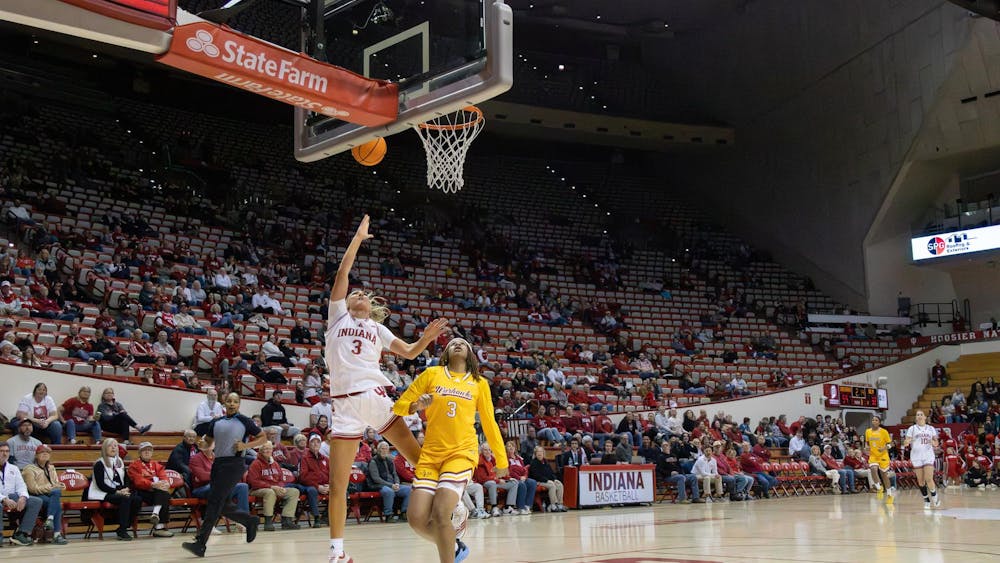MUNCIE – If a student is late to Ball State University instructor Sarah Robbins’ class, chances are he or she didn’t fly there fast enough.\nYes, fly. Over the past eight months, Robbins has been teaching her freshman composition course in Second Life, a virtual-reality world that technology enthusiasts are heralding as the future of Internet communication.\nIn Second Life, users create avatars – 3-D images of themselves – to walk, dance, fly or even swim around a virtual world eerily similar to the real world – right down to corporate-sponsored car dealers and entertainment venues. In the past two years, the site has seen its number of registered users skyrocket from a few thousand to about 4 million, according to Linden Labs, the San Francisco company that operates Second Life.\nIn Robbins’ class, 18 students join their pink-haired instructor – a self-described “super techno junkie” – every Thursday evening on Middletown Island, 16 acres of virtual land in Second Life purchased by the university’s Center for Media Design.\nThe CMD paid $950 upfront for the “land.” Robbins said the money was used to purchase a server sponsored by Linden Labs. The university then pays $150 monthly for maintenance of the island, which includes security, maintenance and upkeep of the server, the instructor explained.\nWhen Robbins first started teaching in Second Life last fall, she was one of about a dozen educators exploring the free site as classroom space, the 31-year-old said. Today, hundreds of college and university professors have followed suit.\nRobbins said the concept of teaching in Second Life is not for everyone.\n“As a form of technology, the site can be intimidating, namely because it takes time to learn how to use it,” she said, noting it helps to be familiar with Photoshop and scripting language if you want to build something – be it a house, boat or box – in Second Life.\nAnd teaching via cyberspace wouldn’t be a good fit for every college class, Robbins added. “I could not see this working for a lecture-based course.”\nBut for Robbins, the platform has given her 100-level English course an exciting new twist.\n“It’s fair to say most students dread taking another English class. We’ve written so many papers and read so many books that the prospect of doing it again is no longer interesting,” said sophomore Evan Bell, 20, who took Robbins’ class last fall. “This class approaches English from another angle and teaches it in a different way. Having fun while learning doesn’t happen very often, but it occurred every time we went to class.”\nThe focus of Robbins’ class is to help students learn how to research and write in a new way – in this case, a virtual setting. While in Second Life, students sit around a circle and debate and communicate via a public instant message system. Robbins then prints off the dialogue recorded as classroom notes.\n“In 20 minutes we get about 10 to 20 pages of dialogue,” she said. “We have great discussions that extend beyond what we’d be able to do in a traditional classroom.”\nFor last semester’s final project, students built an exhibition area and invited Second Life users, or “residents” as they like to be called, to stop by and view their work. In two hours, more than 300 people from around the world paid a visit. “That was exciting,” Robbins said.\nOverall, Robbins has been pleased with how her Second Life course has evolved and how students have responded to the teaching method. Bell credits some of that to Robbins herself.\n“Sarah is absolutely perfect for this kind of class,” he said. “She knows what she’s talking about and can really relate to the students.”\nThe idea of exploring such tech-fueled teaching also was appealing to Ball State officials. \n“It’s another example of innovative use of technology in support of BSU’s education mission,” said Michael Holmes, associate director of insight and communications research professor.\nHolmes helped Robbins secure the CMD funding for the course, which he said was a good investment. \n“(The CMD) contributes to the university’s instructional mission by supporting exploration of new media in efforts such as Sarah’s class,” he said.\nRobbins said some critics have panned Second Life because, like real life, it has a seedy underside, offering residents (virtual) prostitution, drugs and more if they want. “But that portion of Second Life represents just a tiny fraction of that world,” she said.\nNor is Robbins overly concerned by the idea that, in socializing so much online, we lose the ability to interact in the real world with friends, neighbors and colleagues. This, despite the fact a friend recently told her he “lost his first life to Second Life.”\n“Sure that is a risk, but it’s no more of a risk than the notion that people spend the same amount of time in front of the television, or talking on the phone. It’s a risk that doesn’t outweigh the benefits of this program,” she noted.\n-Distributed by the Associated Press
Teacher uses online ‘Second Life’ for classes
Students take classes, interact via cyberspace

Get stories like this in your inbox
Subscribe





